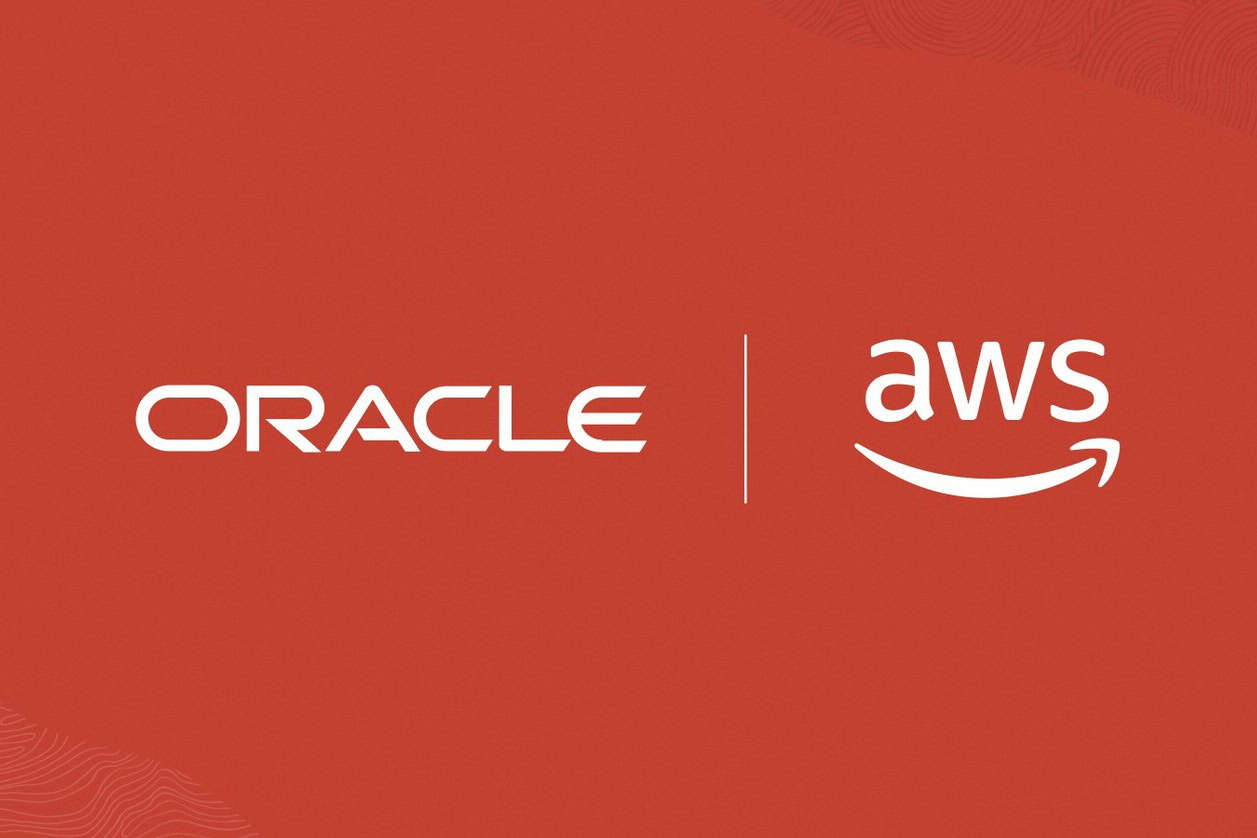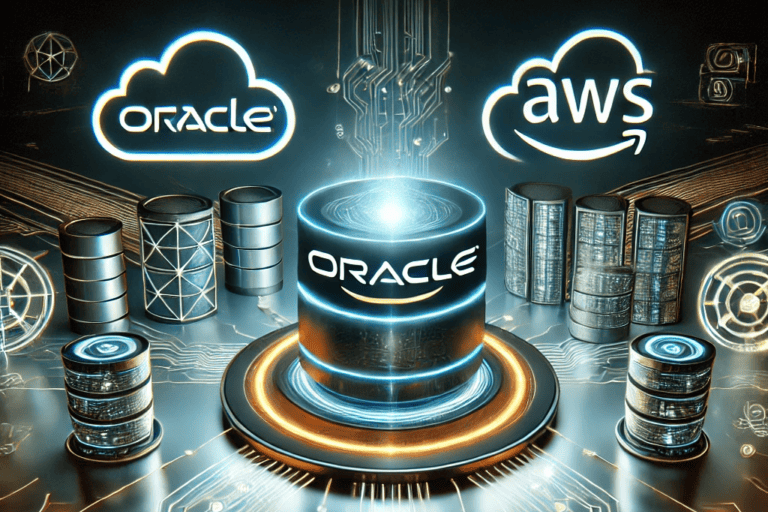On the first day of Oracle Cloud World, Oracle and AWS dropped a veritable bomb. For a long time, Oracle and Amazon Web Services (AWS) were sworn enemies. Today, however, they are announcing a strategic partnership. Yes, you heard correctly. After Microsoft Azure and Google Cloud, AWS is soon going to put Oracle hardware in its own data centers as well, bringing the Oracle Autonomous Database very close to its own offering.
Today’s strategic partnership makes pretty good sense in itself. After all, the other two of the big three public cloud players had it too. Microsoft was the first one a week before Oracle Cloud World last year. A similar deal with Google Cloud followed in June of this year. Apparently, this was too much to ignore, even for AWS, in several respects the biggest hyperscaler gorilla in town. In addition, the reality that there are simply many customers who use the Oracle Database and are also customers of Microsoft, Google and/or AWS, makes the partnerships with the hyperscalers rather logical. Even a player of the stature of AWS does not win out over reality.
Oracle and AWS: sworn enemies….
As logical as the partnership between Oracle and AWS may be, it remains very special news. It is common knowledge that Larry Ellison, Oracle founder and current CTO of the company, never missed an opportunity to lash out at AWS in the past. We went through quite a few of his keynotes. In them, he seemed unable to resist taking a swipe at AWS. Even when we got briefings from Oracle personnel, there was always a slide in the presentation highlighting Oracle’s superiority over AWS’s offerings.
Conversely, it is also well known that AWS has been very active in scrapping anything Oracle-related from its own environment. The day the last Oracle database was switched off, AWS organized a big party, so to speak. In time, AWS also started responding in veiled terms during keynotes at re:Invent, its own conference, to the things Ellison said earlier in the year during Oracle Cloud World (or Open World, as it was long called). It never did this initially. There was always a big debate about between the two companies about whether a single (relational) database is better than many separate databases with a specific use case. Oracle insisted on one, AWS on the other.
…changing their minds and seeming to become friends
Still, there had been some rapprochement in recent years. Several years ago, we attended a session at Oracle Cloud World that went into detail about how Oracle had established a connection to AWS that, while not as good as the Interconnect that Oracle data centers have with Microsoft Azure, already made a lot possible. That in itself was a recognition that AWS did add value to customers. And that not necessarily everything had to be done on Oracle Cloud Infrastructure. Also not insignificant was that Ellison made less and less bold statements about AWS. We’ll be honest, that made his keynotes a little less fun to attend. However, it also indicated that he also seemed to be done with it.
Conversely, especially recently, we saw several signals from AWS that Oracle had gotten several things rather right over the years. In particular, this concerns the concept of the sovereign cloud. This has no doubt been put on the map primarily by Oracle, with one announcement after another. At first, AWS wanted nothing to do with it and was even a bit arrogant about it. It had sovereignty baked into its architecture from the beginning, was the contention. A sovereign cloud was primarily a marketing term, as Amazon’s Chief Security Officer Steve Schmidt put it to us in 2022. In the years since, they have come back from that quite substantially. There was a sovereigntly pledge just before re:Invent 2022, and a lot of investments since, especially in Europe, to bolster AWS’ sovereignty play.
Obviously, today’s announcement is one that didn’t just fall out of the sky. A very long process preceded it. The hatchet seems to be definitively buried, now that Matt Garman, the CEO of AWS will also appear on stage at Oracle Cloud World. The new, improved understanding is ultimately only good news for the market and customers. After all, it means that the two companies are no longer looking primarily at which one of the two is ‘right’. It’s more about what’s right for customers.
Oracle Database@AWS
Actually, today’s announcement of Oracle Database@AWS is not really all that exciting in terms of content. That is, we’ve seen similar announcements in the past years, but on Azure and Google Cloud. In general, Oracle Database@AWS will offer something similar to Oracle Database@Azure and Oracle Database@Google Cloud. There will be Oracle hardware in AWS data centers. On that hardware will run the Oracle Autonomous Database. So it will run as close as possible to Amazon EC2 instances and the applications that run on them, among other things, as well as the AI services that AWS offers, including Amazon Bedrock.
Applications on EC2 and AWS’s AI services access the data in Oracle’s database with a much lower latency than before. It has always been possible to run Oracle databases in AWS by the way. It still is. With this collaboration, however, the two components fit together considerably better, is the idea. Customers will now have direct access to Oracle Exadata Database Service on AWS. Further, there is also no more ETL latency between Oracle Database services and AWS Analytics services. This obviously speeds up workloads using this as well. Integration with Amazon S3 should make it possible to easily create database backups and also easily restore them when needed, including in emergencies.
Finally, customers can also start purchasing Oracle Database services through AWS Marketplace. They can do this without having to shuffle their commitments and licenses, the two companies promise. The partnership also includes a joint support structure from AWS and Oracle and assistance in setting up reference architectures, landing zones and other things needed to help customers get started.
Are customers the big winner from the Oracle-AWS collaboration?
The new strategic partnership between Oracle and AWS should bring together the best of Oracle and the best of AWS, according to the two players. We expected that there would be a rapprochement between the two players, but we didn’t expect it to happen so quickly. If it is really true that Oracle and AWS are friends now, then Ellison and Garman (and undoubtedly Andy Jassy, Amazon’s CEO) have done a pretty good job. It is never easy to basically admit you have been acting a bit foolish at times and change your ways.
Ultimately, Oracle and AWS customers should be the big winners from this collaboration. Of course, that will still depend on a few things. Will there be attractive offers, for example, and what about licensing? Will it really work the way people say it does now, or are there still some snags in that? We will start to see and hear all that the moment Oracle Database@AWS is actually generally available. It isn’t yet but will go into preview later this year and become more widely available during 2025. It will then also be rolled out in more and more regions. Between the lines, we read that it will start in North America.
Also, Oracle Database@Google Cloud is generally available
Oracle and Google also had quite an interesting update today regarding Oracle Database@Google Cloud. That is that this offering is generally available as of now. Unfortunately for Google, this announcement was a bit overshadowed by the much bigger news that Oracle and AWS are going to collaborate. Still, we don’t want to leave it unmentioned here.

